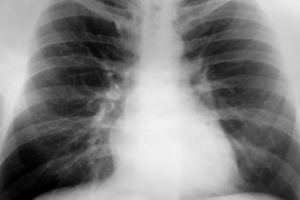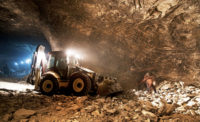 The U.S. Department of Labor's Mine Safety and Health Administration (MSHA) has released a final rule to lower miners' exposure to respirable coal mine dust in all underground and surface coal mines.
The U.S. Department of Labor's Mine Safety and Health Administration (MSHA) has released a final rule to lower miners' exposure to respirable coal mine dust in all underground and surface coal mines.
MSHA says the final rule continues its efforts through its End Black Lung — Act Now! initiative to end black lung disease, a debilitating illness that continues to affect coal miners and their families.
A promise to miners
“We are finally moving forward to overhaul an outdated program that has failed to adequately protect miners from breathing unhealthy levels of coal mine dust and achieving the intent of Congress to eliminate black lung disease,” said Assistant Secretary of Labor for Mine Safety and Health Joseph A. Main.
Thousands dead, billions paid out
Prolonged exposure to respirable coal mine dust causes lung diseases, such as coal workers' pneumoconiosis, emphysema and progressive massive fibrosis. These diseases, collectively referred to as black lung, can lead to permanent disability and death. According to estimates from the National Institute for Occupational Safety and Health (NIOSH), more than 76,000 miners have died since 1968 as the result of the disease, and more than $45 billion in federal compensation benefits have been paid out to coal miners disabled by black lung and their survivors. Evidence indicates that miners, including young miners, are continually being diagnosed with the disease.
The proposed rule was published Oct. 19, 2010, after which seven public hearings were held in locations accessible to the coal mining public. During the comment period – which was extended three times – the MSHA received approximately 2,000 pages of comments from industry, labor, public health professionals, academia and others.
The final rule:
- lowers levels of miners' exposure to respirable coal mine dust and further reduces dust exposure by closing loopholes and improving sampling practices to better reflect actual working conditions and protect all miners from overexposures;
- increases sampling and makes use of cutting-edge technology developed for the mining environment to provide real-time information about dust levels, allowing miners and operators to identify problems and make necessary adjustments instead of letting overexposures languish; also requires immediate corrective action when a sample finds an excessive concentration of dust; and
- has a common-sense phase-in over a two-year period to give the industry the time it needs to adjust to the new requirements, acquire monitoring equipment and obtain compliance assistance from MSHA.
More specifically, the rule:
- reduces the overall dust standard from 2.0 to 1.5 milligrams per cubic meter of air and cuts in half the standard from 1.0 to 0.5 for certain mine entries and miners with pneumoconiosis;
- requires immediate action when dust levels are high instead of allowing days or weeks of miners' exposure to unhealthy dust;
- requires more frequent sampling of areas known to have relatively high dust levels, such as those closest to the production area;
- changes the method of averaging dust samples, which previously allowed miners on some shifts to be exposed to levels above the standard;
- requires sampling for the full shift a miner works to ensure protection for all working hours, rather than stopping measurement after 8 hours, as under the previous requirement;
- requires that, for MSHA-collected samples, MSHA will issue a citation for any single, full-shift sample at or exceeding the citation level;
- requires dust samples to be taken when mines are operating at 80 percent of production, as opposed to the previous 50 percent requirement, so that samples are more representative of actual working conditions;
- requires mine operators to conduct thorough on-shift examinations of dust controls and verify controls with written certification; and
- improves medical surveillance of miners.
A copy of the final rule is available on MSHA's website at http://www.msha.gov/endblacklung/.


